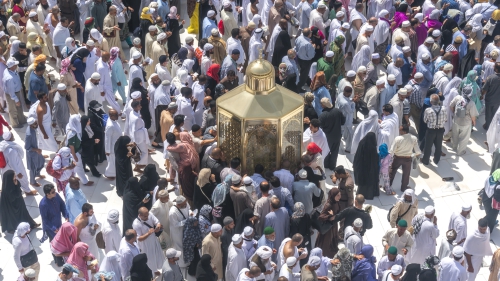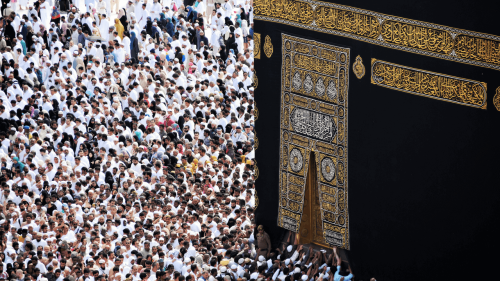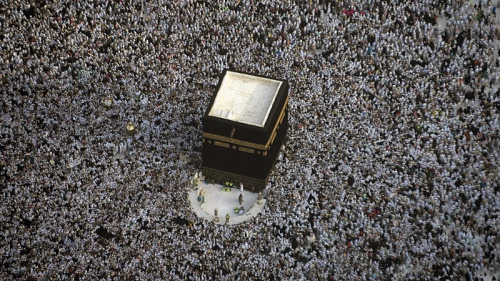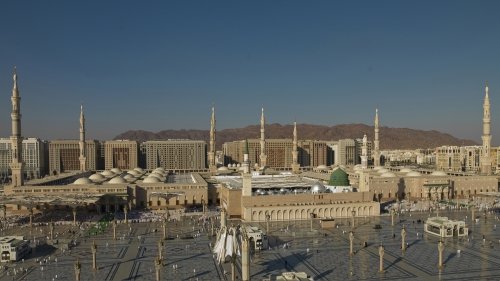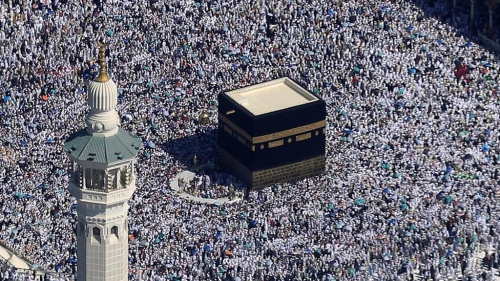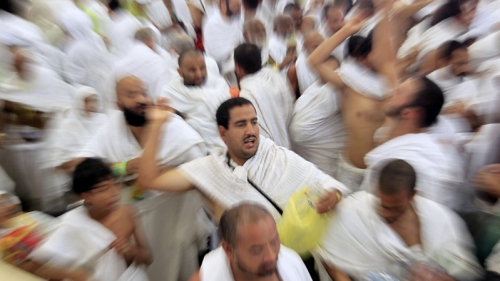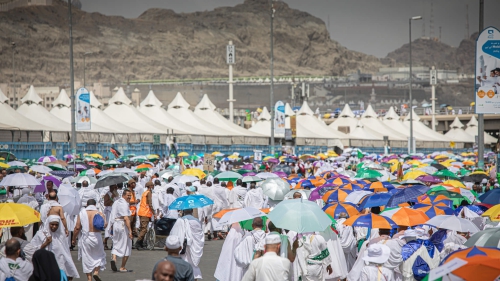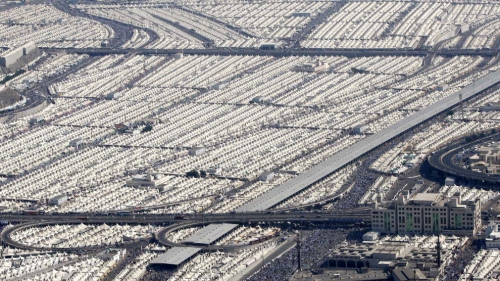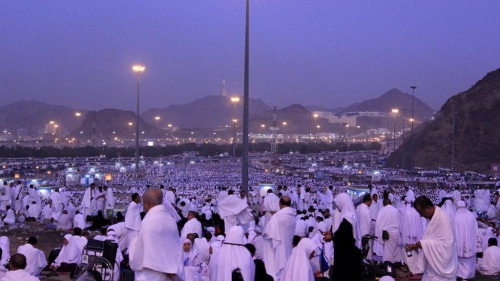Understanding Hajj Beyond Rituals
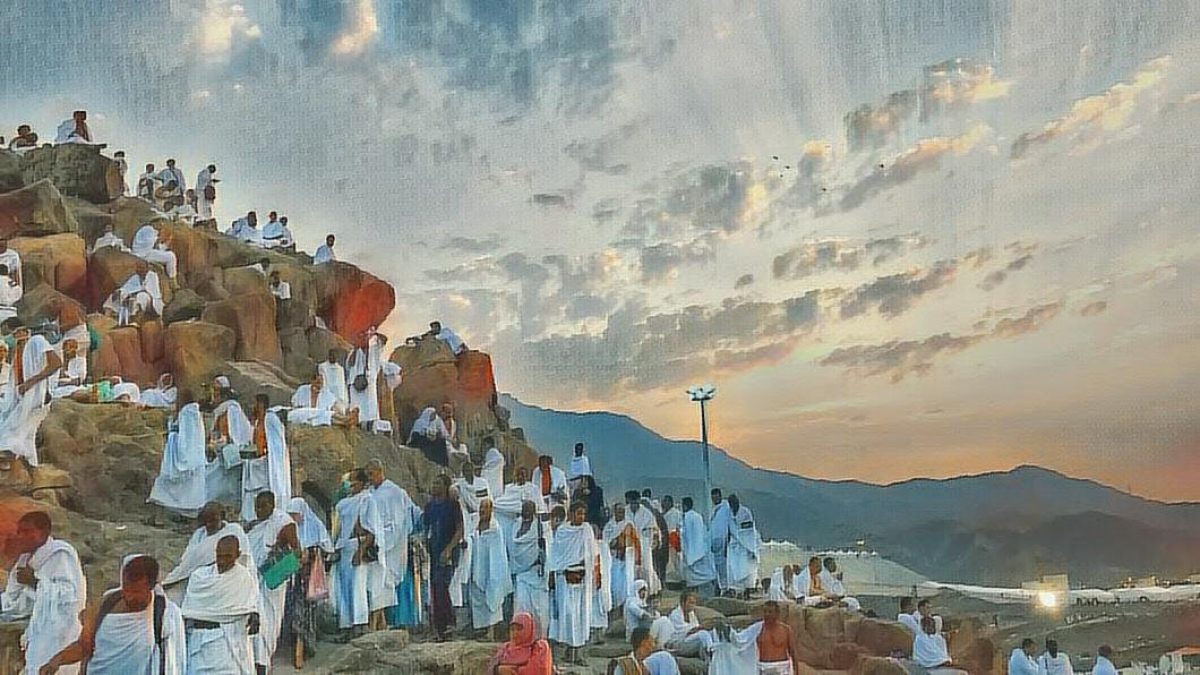
HAJJ is one of the fundamental pillars of Islam. Like other forms of worship in Islam, Hajj is based on God-consciousness. At the same time, it has a unique feature—it is linked to the life of Prophet Abraham.
Every Muslim capable of doing so must perform Hajj at least once in his lifetime. By engaging in various actions during Hajj, he expresses his complete servitude to God. He symbolically performs actions that were performed by Prophet Abraham, kindling the zeal in man to mold himself on the pattern of this Prophet of God.
After building the Kabah in Makkah, Prophet Abraham called on people to perform Hajj for the sake of God. The journey of Hajj is an affirmative response to this call. During the Hajj, pilgrims call out, 'Labbaik Allahumma Labbaik,' which means, "Here I am at Your service O Allah, here I am." The air resounds with this cry as if in answer to the call issued by Prophet Abraham; the pilgrims appear before God, wholeheartedly willing to fulfill any command.
Hajj is a form of worship in which the spirit of other forms of worship are also present.
The literal meaning of 'Hajj' is 'to go on pilgrimage.' According to the Islamic Shariah, Hajj happens once every year when people circumambulate the Kabah, halt on the Plain of Arafat, and perform the other actions that are part of Hajj.
Hajj is a comprehensive form of worship. It entails spending one's wealth and physical exertion, too. It involves the remembrance of God and sacrifices for God as well. Hajj is a form of worship in which the spirit of other forms of worship are also present.
Central to Hajj is the 'House of God,' the Kabah, located in Makkah. The Kabah is a reminder of a truly devout life of an exalted servant of God, Prophet Abraham. It is a reminder of how a devoted servant of God gave up everything for God, patterned his whole life in accordance with God's will and devoted himself completely to God's mission till his last breath.
Journey towards God
Hajj is a journey towards God, the ultimate form of closeness to God in one's life. When the pilgrim stands in front of the Kabah, it reminds him that man has to stand before God. The circumambulation of the Kabah symbolizes the pilgrim's focus around God on finding Him.
A special feature of Hajj is the location—Makkah and its surrounding areas. It is a place selected by God as it was the center of the religious mission of the great missionary, Prophet Abraham. The early history on the basis of which Islam unfolded emerged here. All around are reminders of the great spiritual revolution ushered in under the guidance of Prophet Muhammad some 1400 years ago. These traditions and special features have given Makkah particular significance. A special spiritual and historical atmosphere pervades the place. None who goes there can remain unaffected. One who returns after completing the Hajj is like someone who was earlier covered with dirt and dust and then emerges out from a stream, bathed pure and clean.
Hajj is a journey towards God, the ultimate form of closeness to God in one's life.
This special importance of the Hajj is its spirit, and not so much its external form, or rituals. Just going to Makkah and returning is not Hajj. It is to acquire those special spiritual qualities, for which Hajj has been made obligatory. Hajj is meeting with the Lord. When a pilgrim travels and arrives at places associated with the Hajj, he feels especially inspired. He feels that he has left 'his world' and arrived in 'God's world', that he is running towards his Master, and that he is journeying for His sake; that he is 'throwing stones' at Satan his enemy in the way of the Lord, that he is asking God for all his wants, and receiving from God all that he needs.
The Kabah is among the signs of God on earth. In Makkah, where the Kabah is located, the Prophet received revelations from God, which provide guidance for humanity. But only those who are willing and keen on acquiring it receive guidance. For other people, Hajj is just a sort of tour. They go on Hajj and return no different from what they were before they went.
According to a Hadith (words of the Prophet) report, Hajj is the halting on the Plain of Arafat, indicating the importance of Arafat. During the Hajj, the Plain of Arafat presents an image of the vast assembly of Hajj is a journey towards God, the ultimate form of closeness to God in one's life. On the 9th day of Dhul-Hijjah, vast numbers of God's servants arrive at the Plain of Arafat from all directions. This is an amazing sight. Every single person is wearing the same simple white dress or ihram, has lost his or her distinguishing marks and utters the very same words: Labbaik Allahumma Labbaik. Labbaik Allahumma Labbaik. On witnessing this sight, one is reminded of this Quranic verse:
The trumpet will be blown and, at once, they will rise up from their graves and hasten to their Lord. (36:51)
Hajj is a great form of worship. The status that the Kabah enjoys among all the mosques is the same that Hajj enjoys among all forms of worship.
The Psychological Aspect of Hajj
God, in the Quran, says: And I did not create the jinn and humankind except to worship Me. (51:56)
This suggests that the urge to worship God is innate and deeply rooted in human nature. This is what his very nature demands. Worshipping God is inherent in human nature. This is the reason why other than worship of God, nothing can give man true satisfaction.
One who returns after completing the Hajj is like someone who was earlier covered with dirt and dust and then emerges out from a stream.
Just as a little child spontaneously rushes to hug its mother, driven by a compulsive inner urge, so too impelled by an inner voice, man is driven to rush towards God. Man cannot change his inner personality. Hence God cannot be removed from his heart and mind.
Evidence of Worship of God from Anthropology
Anthropologists have studied a number of human societies from the dawn of history to the present day. They discovered, among other things, a very important fact—that despite life's ups and downs, man has always been a worshipper of God. God and religion are so integral a part of human nature that under no circumstance can they be separated from it. The Encyclopedia Americana summarizes this finding in the following words:
From the earliest days of the world's history, man has been more or less a religious creature. Almost invariably he has had a god, or several of them, to whom he looked for protection. At times these gods have been crude fetishes of whittled wood or roughly hewn stone; at times, they have assumed the form of animals or reptiles or have appeared as cruel monsters eager for the life-blood of those who reverenced them. But however they may have come, man has worshipped them because religion, as represented in the worship of supernatural power, is interwoven with the entire fabric of human nature. (Encyclopedia Americana, 1961, vol. XXIII, p. 354)
It is a fact that consciousness of God is embedded in man's nature, this being how man was created. That said, this consciousness lies dormant. That is why when man does not find the true God, he begins to worship artificial, self-created gods. The urge to worship emerges from a compulsion rooted in his own nature. If he follows the guidance of God's prophets, this urge will find its answer in the form of the worship of the one God. And if he does not follow this guidance, he will worship beings other than God, treating them as God to satisfy this urge.
Worshipping God is inherent in human nature. This is the reason why other than worship of God, can give man true satisfaction.
Man's purpose is just one, the same purpose as that of his Creator and Master in creating him. If man closely examines his nature, he will discover signs of God in himself. Prophets help people to express their dormant innate desire to recognize and worship God.
Symbols Set Up By God
The true vision of God will happen only in the Hereafter. But while having this faith, man still wants to find God in this world. He seeks to get close to God right away, now and not sometime in the future. How can this quest of man be fulfilled in this world?
The answer to this is provided through symbols set up by God (2:158 Quran). God has made some things as His signs on account of their historical importance. Various conditions surround these signs as reminders so that on seeing them, one is reminded of God. God, who cannot be found directly, can be found indirectly. Man cannot see God Worshipping God is inherent in human nature. This is the reason why other than worship of God, nothing can give man true satisfaction. 16 Spirit of Islam Issue 33 September 2015 in this world, but he can see the symbols set up by God. He cannot find a manifest form of God that he can touch and experience a sense of closeness to Him. But man can touch the symbols set up by God, and through them experience the closeness to God.
Symbols are signs or reminders of something, something that is not the real thing but because of some connection with the real thing reminds one of the real things. An example of this are the two hills, Safa and Marwah, 'symbols set up by God'. (2:158 Quran)
Safa and Marwah are located in Makkah, five hundred feet apart, near the Kabah. When Prophet Abraham brought his wife Hagar (Hajira) and infant Ishmael and settled them here—which later became the town of Makkah—this place was uninhabited with no water available. As Hagar's supply of water exhausted, she ran in search of water—seven times— between Safa and Marwah. God was pleased with Hagar, and declared Safa and Marwah as His symbols—a reminder of her devotion to God. In remembrance of this, today pilgrims run seven times between Safa and Marwah.
God and religion are so integral a part of human nature that under no circumstance can they be separated from it.
Seeing Safa and Marwah, one is reminded of the history of how a devout servant of God, Prophet Abraham, left his fertile land in Iraq and came to a desert land with his wife and child solely for the sake of God. This is a perfect example of faith in God and trust in Him.
Other things related to the Kabah, the Hajar al-Aswad (the Black Stone in the Kabah) and Hajj are also signs of God. They are symbols of the God-oriented genuine monotheist, Prophet Abraham and of those people in history who led ideal lives of devotion to God. All the rituals of Hajj are conducted amidst some of these symbols set up by God. Being in the environment of these symbols, one feels one is in God's environment.
Meeting With God
The Kabah is the 'House' of the One God. It was made by two great prophets of God, Prophet Abraham and his son Ishmael. The lofty lives of these two prophets and the amazing sacrifices that they made for the sake of God are linked with this 'House.' And then, the lives of devotion and service to God by the last Prophet, Prophet Muhammad and his companions unfolded in its environment.






